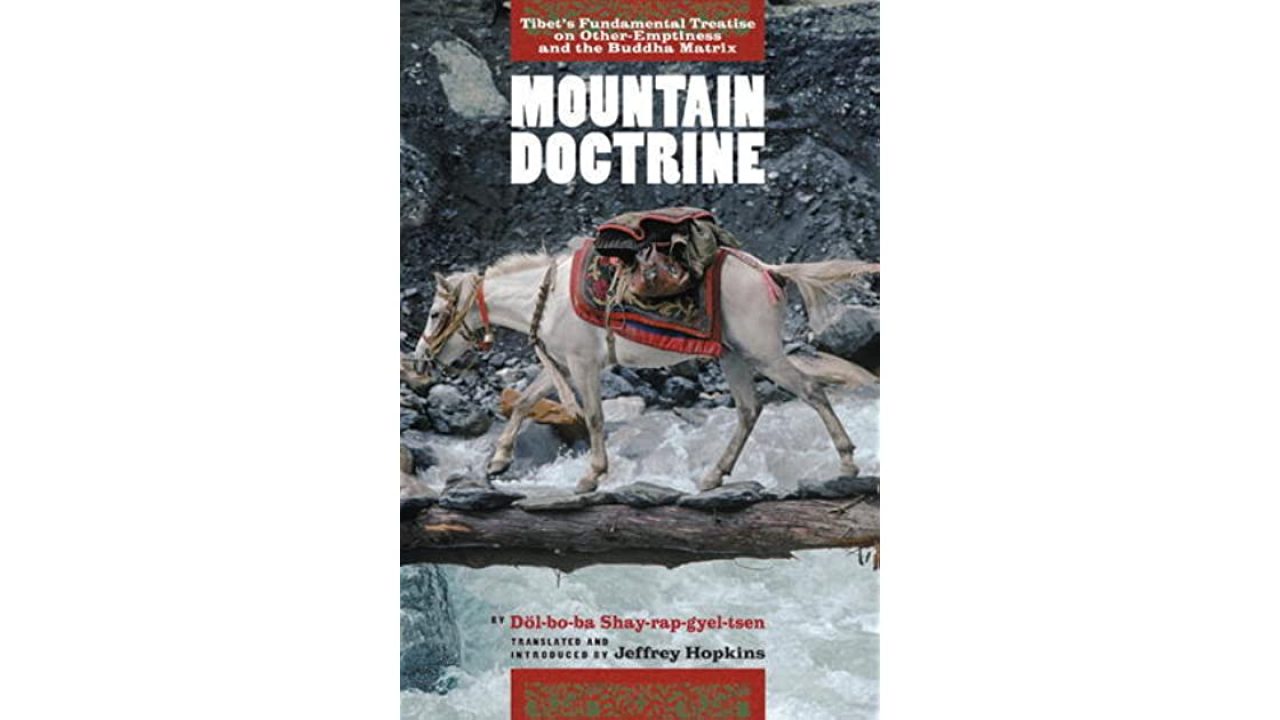Part three
The latter two commentaries are said to have been composed using the
rubric, or grid, of the Kālachakra Tantra, and thus all three are Kālach
related. Döl-bo-ba speaks of these three as the quintessential instructions
tenth-ground bodhisattvas. He also draws on a vast array of sütras, tantra
and Indian treatises.
Despite having relied on this plethora of Indian sources, the Mountain
Doctrine was received with amazement and shock. However, Döl-bo-ba also
was highly lauded and received great offerings from exalted religious figures of the day, among whom he indeed was one of the greatest. He gave teachings sometimes to thousands of persons and at other times to the luminaries of his period. He was invited, along with Bu-dön Rin-chen-drup- another great master of Kalachakra to China by the Yüan dynasty (Mongolian) Emperor Toghon Temür. Neither of them went, and to avoid the emperor’s displeasure Döl-bo-ba “stayed in different isolated areas for fouryears,
Concerned about the damage to religious centres and so forth that ensued from a protracted political power struggle, Döl-bo-ba decided to travel to Lhasa and make prayers to the Jo bo image there, which he felt to be the same as the Buddha himself.”
Dol po pa had become increasingly disturbed by the extensive damage to the Buddhist communities, temples, and shrines in Tibet due to the great political turmoil that had swept through the land during the protracted power struggle between the Sa skya pa in Gtsang [the western province of Tibet) and the newly arisen Phag mo gru in Dbus [Central Tibet).”
Thus, in 1358, at the age of sixty-six, he departed from Jo-nang. Along the way, he gave teachings to the Fifteenth Patriarch of Sa-ğya, Sö-nam-gyel-tsen, who requested that he compose The Great Calculation of the Doctrine, Which Has the Significance of a Fourth Council along with an auto-commentary. Döl-bo-ba audaciously’ titled his work this way because he considered the doctrine of other-emptiness and its implications for the buddha-nature to be like an addition to the famous three councils in India.
He also gave lectures that were often so large that people at the edges could not hear the teaching so it had to be relayed through an interpreter . that is, someone repeating what he said. In the Hla-sa area he was through with teachers and others requesting teachings, where «There were so many people listening to the teachings that doors were broken and stairways collapsed.
After six months, when leaving Hla-ša to return to Jo-nang, he was thronged by believers, and, again, along the way he taught huge crowds and received the praise of monastic leaders. When he stopped in Sha-lu to debare with Bu-dön, the latter sought to avoid confrontation, but when Döl-bo-ba nevertheless made the opening exclamation for debate (thal skad), the force… produced a crack in the wall of Bu-ston’s residence. In the eleventh month of the mouse year (the end of 1360), Döl-bo-ba gave a teaching on the Mountain Doctrine and the next day passed away in deep meditation.
When the corpse was offered into the fire, the smoke rose up only
about the length of a spear, then went to the stupa like a streaking
arrow, circled it many times, and finally disappeared to the west.”
After the crematorium was opened, many clear, crystal-like formations appeared among the ashes. And “ashes from the cremation were gathered and put along with other relics into an image of Dol po pa that was in the great üpa he had built.
